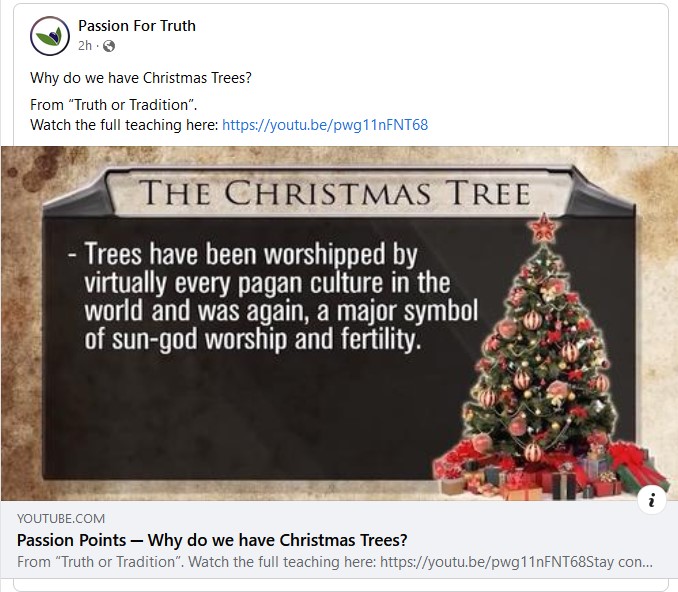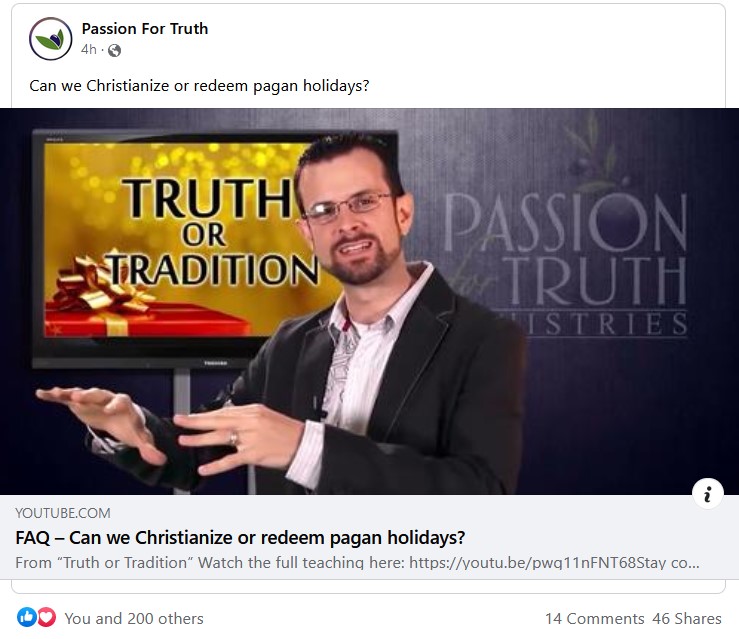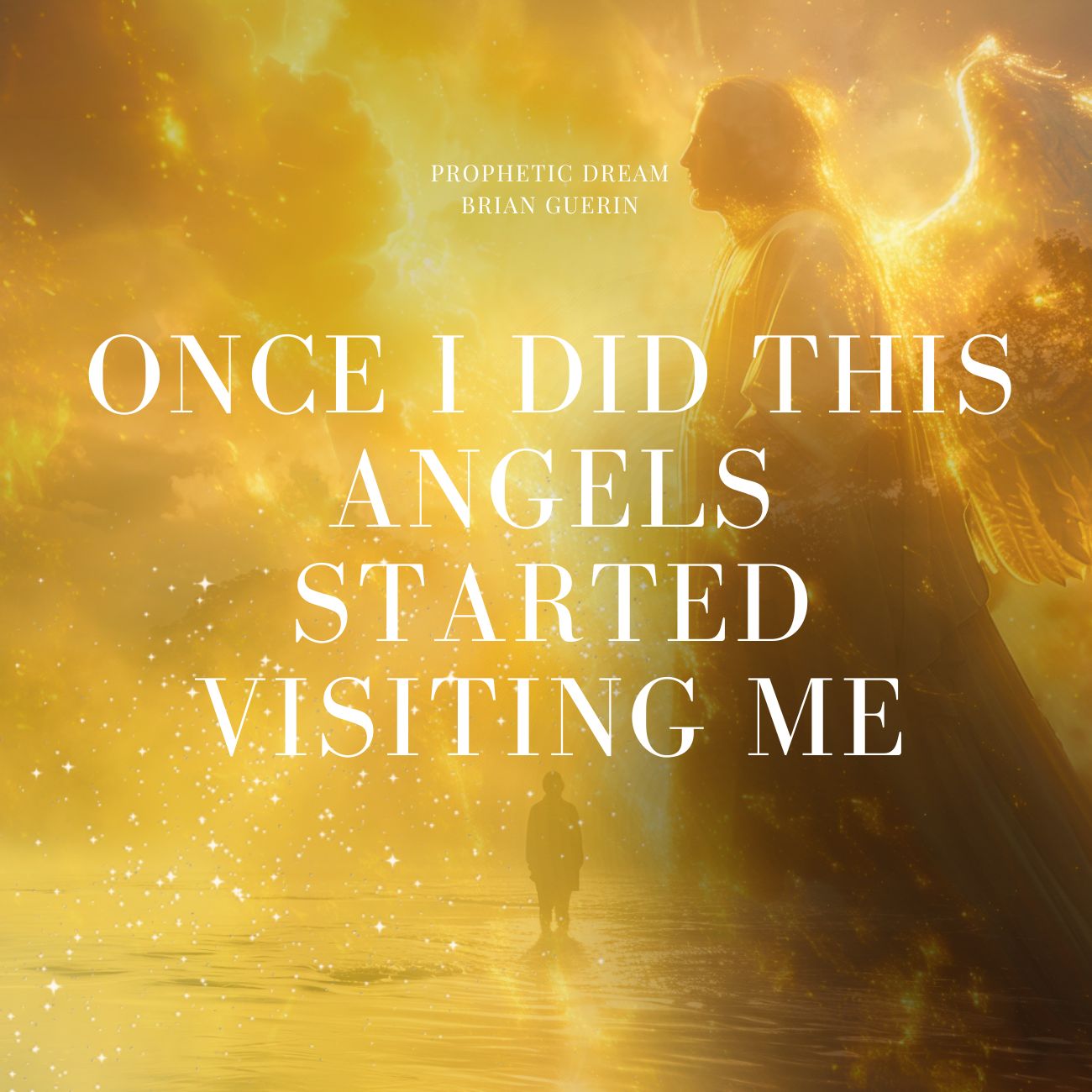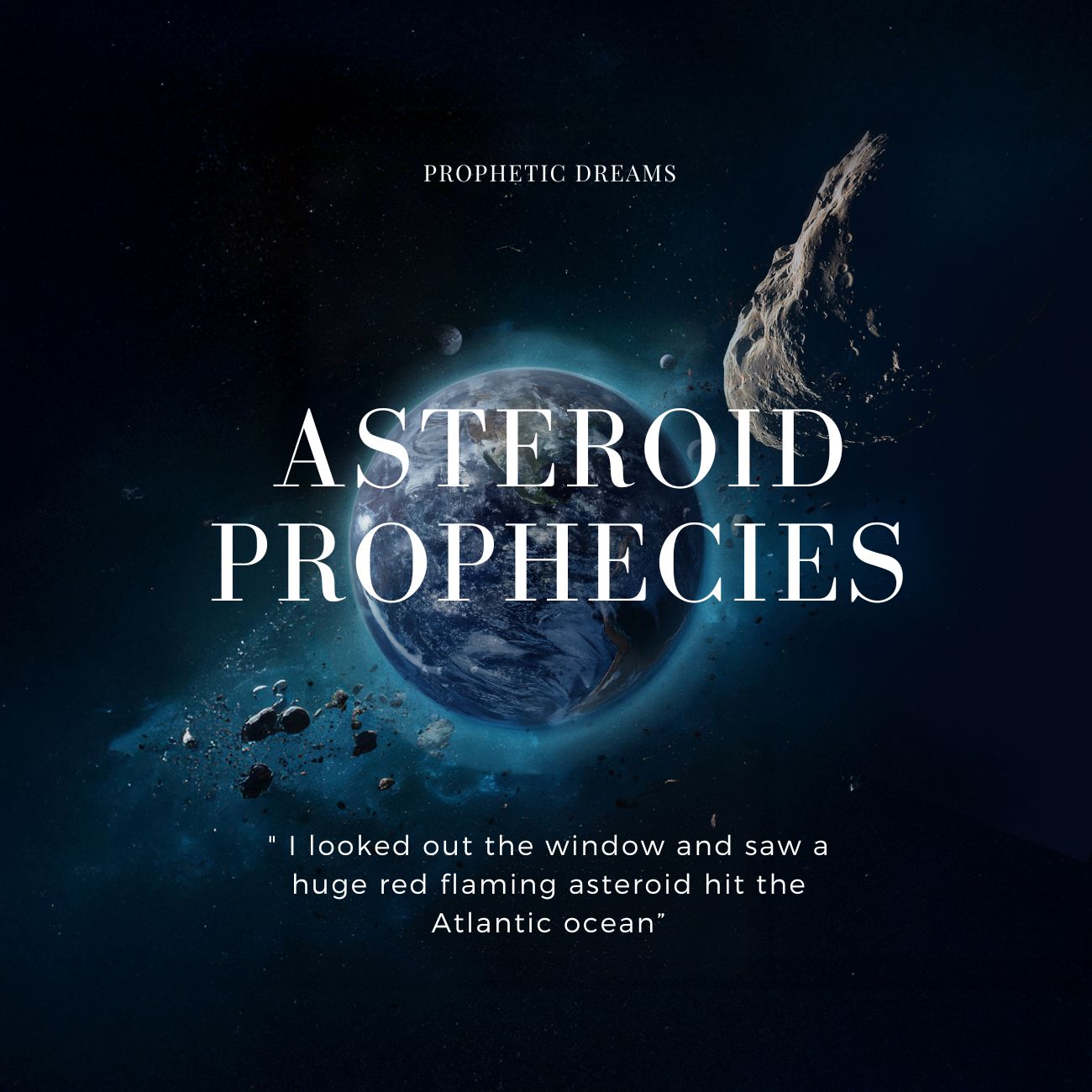Re-Published From unexplainedmysteriesoftheworld.com/
Michael Snyder
The Mystery Of The Pagan Origin Of Christmas: Jesus Was Not Born On December 25th But A Whole Bunch Of Pagan Gods Were
Why is Christmas celebrated on December 25th? Most people assume that it has always been a Christian holiday and that it is a celebration of the birth of Jesus. But it turns out that Jesus was not born on December 25th. However, a whole bunch of pagan gods were born on that day. In fact, pagans celebrated a festival involving a heroic supernatural figure that visits an evergreen tree and leaves gifts on December 25th long before Jesus was ever born. From its early Babylonian roots, the celebration of the birth or “rebirth” of the sun god on December 25th came to be celebrated under various names all over the ancient world. You see, the winter solstice occurs a few days before December 25th each year. The winter solstice is the day of the year when daylight is the shortest. In ancient times, December 25th was the day each year when the day started to become noticeably longer. Thus it was fitting for the early pagans to designate December 25th as the date of the birth or the “rebirth” of the sun.
The truth is that thousands of years before there was a “Santa Claus”, there was another supernatural figure who would supposedly visit a tree and leave gifts every December 25th.
His name was Nimrod.
The celebration of December 25th goes all the way back to ancient Babylon.
According to ancient Babylonian tradition, Semiramis (who eventually became known as the goddess Astarte/Asherah/Ashtoreth/Isis/Ishtar/Easter in other pagan religions) claimed that after the untimely death of her son/husband Nimrod (yes she was married to her own son), a full grown evergreen tree sprang up overnight from a dead tree stump. Semiramis claimed that Nimrod would visit that evergreen tree and leave gifts each year on the anniversary of his birth, which just happened to be on December 25th.
This is the true origin of the Christmas tree.
On Bibletools.org, Mike Ford describes this ancient pagan tradition about Nimrod this way….
—-
After Nimrod’s death (c. 2167 BC), Semiramis promoted the belief that he was a god. She claimed that she saw a full-grown evergreen tree spring out of the roots of a dead tree stump, symbolizing the springing forth of new life for Nimrod. On the anniversary of his birth, she said, Nimrod would visit the evergreen tree and leave gifts under it.
—-
On that same site, John Plunkett described the ancient pagan myth regarding December 25th in this manner….
—-
From many ancient writings, considerable is learned of this man, who started the great organized worldly apostasy from God that has dominated this world until now. Nimrod was so evil, it is said he married his own mother, whose name was Semiramis. After Nimrod’s untimely death, his so-called mother-wife, Semiramis, propagated the evil doctrine of the survival of Nimrod as a spirit being. She claimed a full-grown evergreen tree sprang overnight from a dead tree stump, which symbolized the springing forth unto new life of the dead Nimrod. On each anniversary of his birth, she claimed, Nimrod would visit the evergreen tree and leave gifts upon it. December 25th was the birthday of Nimrod. This is the real origin of the Christmas tree.
—-
From this original fable peddled by Semiramis (the “Queen of Heaven”) came the tradition for pagans to go out to the holy “groves” and leave gifts for Nimrod (who later came to be worshipped as “Baal”) at an evergreen tree.
Does that sound like a “Christian” holiday to you?
In fact, in his classic work “The Two Babylons”, Alexander Hislop describes the Babylonian origins of Christmas on page 93….
“Long before the fourth century, and long before the Christian era itself, a festival was celebrated among the heathen, at that precise time of the year, in honor of the birth of the son of the Babylonian queen of heaven. It may fairly be presumed that, in order to conciliate the heathen, and to swell the number of the nominal adherents of Christianity, the Roman Church, giving it only the name of Christ adopted the same festival. This tendency on the part of Christians to meet Paganism halfway was very early developed; and we find Tertullian, even in his day, about the year 230, bitterly lamenting the inconsistency of the disciples of Christ in this respect, and contrasting it with the strict fidelity of the Pagans to their own superstition.”
In fact, the name “Yule” is the Babylonian word for “infant” or “little child” as Hislop describes on pages 93 and 94 of his book….
“That Christmas was originally a Pagan festival is beyond all doubt. The time of the year, and the ceremonies, with which it is still celebrated, prove its origin. In Egypt, the son of Isis, the Egyptian title for the queen of heaven, was born at this very time, ‘about the time of the winter solstice.’ The very name by which Christmas is popularly known among us — Yule-day — proves at once its pagan and Babylonian origin. ‘Yule’ is the Chaldee name for an ‘infant’ or ‘little child’; and as the 25th of December was called by our Pagan Anglo-Saxon ancestors, ‘Yule-day,’ or the ‘Child’s-day,’ and the night that preceded it, ‘Mother-night,’ long before they came in contact with Christianity, that sufficiently proves its real character. Far and wide, in the realms of Paganism, was this birthday observed.”
So when you offer “yuletide” greetings, you are actually acknowledging Nimrod’s birthday.
The truth is that the pagan holiday of “Yule” has been celebrated by the pagans of northern Europe from late December through early January for centuries and centuries. Yule logs were traditionally lit throughout northern Europe to honor the pagan god Thor. The festival would continue until the Yule log burned out – which could take up to twelve days. This is where we get the so-called “12 days of Christmas”.
In fact, Wiccans, neo-pagans and even many witches still celebrate Yule to this day. Many of them think it is incredibly funny when Christians use the pagan word Yule. Yule is one of the most important holidays for them. The following excerpt was taken from a website on witchcraft:
—–
Birthday of the Twins:
Kemetic (ancient Egyptian) holy day. Birthday of the Twins, Heru Sa Aset and Bast, children of Aset [Isis]. Origin of Yule and Christmas. On Winter Solstice Asar [Osiris] dies. Aset [Isis] with the magick help of Nebt Het [Nephthys] creates a Djed Pillar [artificial penis] for Her husband and impregnates Herself. For three full days (December 22-24) Asar lies dead and the Twins grow in Aset’s belly. On this day (December 25th) the Twins are born, the reincarnation or resurrection of Their Father. The green tree is a symbol of the green-skinned Asar, God of fertility and vegetation. The colored lights are symbols of Aset, Goddess of magick and divine light. Red, green, and white are the traditional candle colors of Bast (this was Her birthday alone for several thousand years of early Kemetic history), later being adapted to red for Aset (the color of the Mother’s menstrual flow), green for Asar (the color of vegetation), and white for the Twins (the color of pure light).
—–
So where did Christmas come from?
Well, the truth is that the word “Christmas” is not actually found anywhere in the entire Bible.
In fact, the word “Christmas” was not even invented until about a thousand years after Jesus left this earth.
The Catholic Encyclopedia even admits this….
“The word for Christmas in late Old English is Cristes Maesse, the Mass of Christ, first found in 1038.”
But Jesus was not even born on December 25th.
The reality is that it would have simply been far too cold for shepherds to be out with their sheep at night in Israel on December 25th.
The vast majority of Christian scholars now acknowledge this.
So when was Jesus actually born?
Based on the information we have in the Scriptures, it appears that it is most likely that Jesus was born in the fall. In particular, it seems most likely that Jesus was actually born during the Feast of Tabernacles as the video posted below demonstrates….
https://youtu.be/f5ozUNbo8F4
So how did December 25th come to be celebrated by Christians?
Well, by the time the Roman Empire legalized Christianity in the 4th century, most of the other religions in the empire were celebrating the birth of their gods on December 25th.
Leading up to December 25th in ancient Rome, a festival known as Saturnalia was one of the biggest celebrations of the year. Saturnalia was a festival during which the Romans commemorated the dedication of the temple of their god Saturn. This holiday began on the 17th of December and it would last for an entire week until the 23rd of December.
Saturnalia was typically characterized by gift-giving, feasting, singing and lots and lots of debauchery. The priests of Saturn would carry wreaths of evergreen boughs in procession throughout the pagan Roman temples.
Later on, the Romans also started holding a festival on December 25th called Dies Natalis Solis Invicti, which means “the birthday of the unconquered sun.” Basically it was a way for the empire to consolidate all of the December 25th “sun god” birthdays throughout the empire into one holiday.
In the year 350 A.D., Pope Julius I declared that the birth of Jesus would be celebrated on December 25th from then on. There appears to be little doubt that Pope Julius was trying to make it as painless as possible for pagan Romans to convert to Catholicism.
However, the new holiday did not really take off with Christians at first. The widespread celebration of December 25th by Christians did not really get going until 378. It was apparently then dropped in 381 and then resurrected in 400.
But the truth is that December 25th was celebrated as the birthday of scores of pagan gods long before it was ever associated with Jesus.
As we discussed earlier, the celebration of December 25th goes all the way back to Nimrod (who eventually came to be worshipped as Baal).
Baal worship spread throughout the known world and provided the basis for all other pagan religions. The following are just some of the pagan gods that had “birthdays” on December 25th….
Mithras
Horus
Attis
Dionysus the son of Zeus
Tammuz
Hercules
Perseus
Helios
Bacchus
Apollo
Jupiter
Sol Invictus – (The “Unconquered Sun”)
When the Roman Catholics decided to make December 25th a “Christian holiday” in the fourth century, they simply adopted a long standing pagan holiday and kept most of the same pagan traditions.
For example, the ancient Babylonian “Christmas tree” became known as a symbol of fertility throughout the ancient world. The pole, balls, and tinsel (phallus, testes, semen) represented various aspects of male fertility, while wreaths were always fashioned in a circle to represent female fertility.
In “The Two Babylons”, Hislop describes some of the ancient traditions surrounding the Christmas tree on page 97….
“The Christmas tree, now so common among us, was equally common in Pagan Rome and Pagan Egypt. In Egypt that tree was the palm-tree; in Rome it was the fir; the palm tree denoting the Pagan messiah, as Baal-Tamar, the fir referring to him as Baal-Berith. The mother of Adonis, the sun-god and great mediatorial divinity, was mystically said to have been changed into a tree, and when in that state to have brought forth her divine son. If the mother was a tree, the son must have been recognized as the ‘Man the branch.’ And this entirely accounts for the putting of the Yule Log into the fire on Christmas Eve, and the appearance of the Christmas tree the next morning.”
That sure puts a different spin on Christmas traditions, now doesn’t it?
Most Christians don’t even realize that God warned us about such things in the Bible.
In Jeremiah 10:1-4, God warns us against putting up these decorated trees like the pagans were doing….
Hear what the LORD says to you, O house of Israel. This is what the LORD says: “Do not learn the ways of the nations or be terrified by signs in the sky, though the nations are terrified by them. For the customs of the peoples are worthless; they cut a tree out of the forest, and a craftsman shapes it with his chisel. They adorn it with silver and gold; they fasten it with hammer and nails so it will not totter.”
The Puritans understood this. It comes as a surprise to most Americans to learn that the Puritans once banned Christmas trees in many areas of the United States because they were considered so pagan.
According to ancient Babylonian tradition, the springtime fertility festival of Ishtar (Easter) was a time when the “Queen of Heaven” was believed to become impregnated. Nine months later the sun god would be “born” or “reborn”.
To the ancient Babylonians, these holiday trees came to be worshipped as the “Queen of Heaven”, and gifts were brought to the “groves” of trees that had been grown in her honor and placed beneath them as offerings.
The Babylonians also used wreaths to represent the nativity of the sun, since they were objects that depicted the “womb” of the Earth mother.
Early Christians completely rejected these traditions. In the 3rd century, Tertullian wrote the following about these pagan celebrations….
“On your day of gladness, we [Christians] neither cover our doorposts with wreaths, nor intrude upon the day with lamps. At the call of public festivity, you consider it a proper thing to decorate your house like some new brothel. We are accused of a lower sacrilege because
we do not celebrate along with you the holidays …”
The truth is that the celebration of December 25th and most of the accompanying traditions have always been pagan.
But many Christians will protest and say that it is okay for them to celebrate December 25th because to them it is all about Jesus.
That was the same excuse that Aaron used when he and most of the rest of the people of Israel worshipped the golden calf while Moses was up on the mountain getting the Law of God. Aaron actually said that the worship of the golden calf was being done to the Lord as we read in Exodus 32:5….
When Aaron saw this, he built an altar in front of the calf and announced, “Tomorrow there will be a festival to the LORD.”
But we know how that turned out.
God was not pleased.
At all.
In fact, He was furious.
In the same way, God is not pleased when we celebrate pagan holidays and keep traditions that have been pagan for thousands of years.
For even more on the pagan origins of Christmas, check out the following YouTube video….
https://youtu.be/t08r4aMuOUE
About the author: Michael T. Snyder is a former attorney who now publishes Mysteries Of The World. His new thriller entitled “The Beginning Of The End” is now available on Amazon.com.
 Christmas Trees – See this video on youtube
Christmas Trees – See this video on youtube

3 minute video – See this post on Youtube
…………………………
MY Son Was Not Born On “Christmas Day”! – Orianna Silver – 444 Prophecy News
……………………………………
https://444prophecynews.com/my-son-was-not-born-on-christmas-day-orianna-silver/
Source: MY Son Was Not Born On “Christmas Day”! – Orianna Silver – 444 Prophecy News
Orianna Silver
MY Son Was Not Born On “Christmas Day”!
12-11-17
“Daughter, write these words.
The works of man do not please Me.
There are so many who do this in “My Name”, but their hearts are far from Me.
Around this “Christmas season” they say they are worshiping Me, but lo, I say they are worshiping their trees, their gifts, their fancy houses and churches they have decorated in My Name!
This does not please Me.
This makes them feel good inside, but it is a false pleasure.
My Son was not born on “Christmas Day”, the “sun” is worshiped on this day.
Your adversary is receiving worship on this day.
Now it is not wrong to love your family or give them good things, but do not do it in the name of “Christmas”!
That is NOT one of MY Holy Days.
Do not worship this day! Do not say My Son was born on Christmas Day. Is that in My Word?
It was a glorious day when the Savior of the world was born, so you could have eternal life, but do not worship this day – worship My Son as you are worshiping Me also.
I call to all who have one foot in this worldly holiday, look into the truth about this day while you still can.”
(For those interested in searching about what Yahweh is speaking about here, research Tammuz, Mithra, Nimrod, winter solstice/ rebirth of the sun, etc)
Jeremiah 10:1-4
Hear the word that the Lord speaks to you, O house of Israel. Thus says the Lord:
“Learn not the way of the heathen, nor be dismayed at the signs of the heavens because the nations are dismayed at them, for the customs of the peoples are vanity.
A tree from the forest is cut down and worked with an axe by the hands of a craftsman.
They decorate it with silver and gold; they fasten it with hammer and nails so that it cannot move.
Deuteronomy 12:29-31
“When the Lord your God cuts off before you the nations whom you go in to dispossess, and you dispossess them and dwell in their land, take care that you be not ensnared to follow them, after they have been destroyed before you, and that you do not inquire about their gods, saying, ‘How did these nations serve their gods?—that I also may do the same.’ You shall not worship the Lord your God in that way, for every abominable thing that the Lord hates they have done for their gods, for they even burn their sons and their daughters in the fire to their gods.
Matthew 15:7-9
You hypocrites! Well did Isaiah prophesy of you, when he said:“‘This people honors me with their lips, but their heart is far from me;in vain do they worship me, teaching as doctrines the commandments of men.’”
Revelation 18:4-5
Then I heard another voice from heaven saying,“Come out of her, my people, lest you take part in her sins, lest you share in her plagues; for her sins are heaped high as heaven, and God has remembered her iniquities.
Ezekiel 8Abominations in the Temple
8 In the sixth year, in the sixth month, on the fifth day of the month, as I sat in my house, with the elders of Judah sitting before me, the hand of the Lord God fell upon me there. 2 Then I looked, and behold, a form that had the appearance of a man.[a] Below what appeared to be his waist was fire, and above his waist was something like the appearance of brightness, like gleaming metal. 3 He put out the form of a hand and took me by a lock of my head, and the Spirit lifted me up between earth and heaven and brought me in visions of God to Jerusalem, to the entrance of the gateway of the inner court that faces north, where was the seat of the image of jealousy, which provokes to jealousy. 4 And behold, the glory of the God of Israel was there, like the vision that I saw in the valley.
5 Then he said to me, “Son of man, lift up your eyes now toward the north.” So I lifted up my eyes toward the north, and behold, north of the altar gate, in the entrance, was this image of jealousy. 6 And he said to me, “Son of man, do you see what they are doing, the great abominations that the house of Israel are committing here, to drive me far from my sanctuary? But you will see still greater abominations.”
7 And he brought me to the entrance of the court, and when I looked, behold, there was a hole in the wall. 8 Then he said to me, “Son of man, dig in the wall.” So I dug in the wall, and behold, there was an entrance.9 And he said to me, “Go in, and see the vile abominations that they are committing here.” 10 So I went in and saw. And there, engraved on the wall all around, was every form of creeping things and loathsome beasts, and all the idols of the house of Israel. 11 And before them stood seventy men of the elders of the house of Israel, with Jaazaniah the son of Shaphan standing among them. Each had his censer in his hand, and the smoke of the cloud of incense went up. 12 Then he said to me, “Son of man, have you seen what the elders of the house of Israel are doing in the dark, each in his room of pictures? For they say, ‘The Lord does not see us, the Lord has forsaken the land.’” 13 He said also to me, “You will see still greater abominations that they commit.”
14 Then he brought me to the entrance of the north gate of the house of the Lord, and behold, there sat women weeping for Tammuz. 15 Then he said to me, “Have you seen this, O son of man? You will see still greater abominations than these.”
16 And he brought me into the inner court of the house of the Lord. And behold, at the entrance of the temple of the Lord, between the porch and the altar, were about twenty-five men, with their backs to the temple of the Lord, and their faces toward the east, worshiping the sun toward the east. 17 Then he said to me, “Have you seen this, O son of man? Is it too light a thing for the house of Judah to commit the abominations that they commit here, that they should fill the land with violence and provoke me still further to anger? Behold, they put the branch to their nose. 18 Therefore I will act in wrath. My eye will not spare, nor will I have pity. And though they cry in my ears with a loud voice, I will not hear them.”
2 Corinthians 6:16-18
What agreement has the temple of God with idols? For we are the temple of the living God; as God said,
“I will make my dwelling among them and walk among them,
and I will be their God,
and they shall be my people.
Therefore go out from their midst,
and be separate from them, says the Lord,
and touch no unclean thing;
then I will welcome you,
and I will be a father to you,
and you shall be sons and daughters to me,
says the Lord Almighty.”






